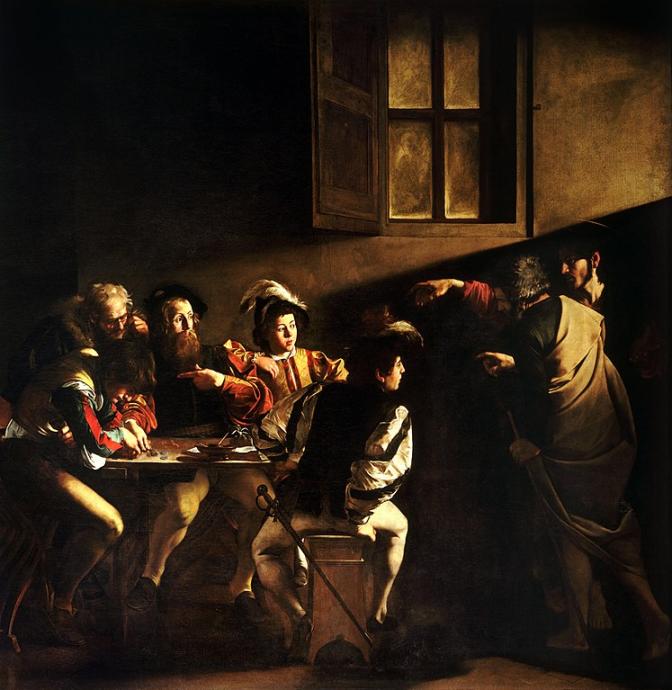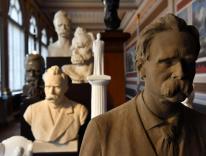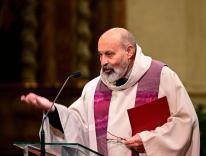
Part of a series on the Vatican Synod on Young People, the Faith, and Vocational Discernment, this is the second of Griffin Oleynick’s dispatches from Rome. Catch up on his first piece here. Check back soon for the next installment.
When people say all roads lead to Rome, they don’t necessarily mean that those roads will be easy. I learned this about fifteen minutes after I left home in New York for the airport, when the subway conductor told passengers that because of a “prior incident downtown” we’d have to get off the train and walk the whole way down to the next stop. “Just like a canoe portage,” I thought as I dragged my heavy suitcase up the stairs and back onto the street. But the detour was instructive, drawing my attention to beauty I otherwise would have missed: joyful gospel music flowing from inside a theater, young families strolling by quiet shops and restaurants. God, it seemed, was telling me something important as I made my way to the Synod on Young People, the Faith, and Vocational Discernment—here at the start I’d need to let go of my propensity to plan and instead just let God lead.
So maybe it wasn’t surprising how easy everything was once I arrived. Rome is a sprawling metropolis, surrounded by fields and suburbs that radiate outwards for miles, but the historic center is compact and walkable. In October the crowds are thinner than in the summer, and the cool, mild weather invites you to spend time outside, strolling in a leisurely passeggiata. I found my hotel, a bed and breakfast just beneath the shadow of the massive cupola of St. Peter’s Basilica. The Holy See Press Office, situated in a sleek, marble-paneled building nearby, was equally welcoming: in under thirty minutes (a small bureaucratic miracle, by Italian standards), I had picked up my press badge and was ready to begin reporting. The Synod, though, would not begin for another thirty-six hours. With free time on my hands, I set out to explore.
I’d been thinking about Pope Francis on the plane. Especially these days, when his popularity among U.S. Catholics is diminishing, I found it refreshing and nourishing to read his words. In an interview he gave to a young Italian journalist, the pope explained that young people, often trapped in the darkness of narcissism and alienation, need to open themselves up to the light of relationships, finding in the dynamic process of loving others a concrete way of living a meaningful, generative, and sustainable life. I had this idea in mind as I wound my way past the sculpted fountains of Piazza Navona, along the narrow Via della Scrofa, and into the small church of San Luigi dei Francesi.
Built in the late 16th century, the church houses three famous religious paintings by Caravaggio, completed in 1600. In the pope’s first major interview, a few months after his election in 2013, he mentioned that as a young Jesuit in Rome he used to spend a lot of time here contemplating Caravaggio’s “Calling of St. Matthew.” It’s easy to see why: set under a lunette window in a small side chapel to the left of the main altar, the crisp chiaroscuro imagery compresses into a single decisive moment the whole drama of a life’s vocation.

In the scene, the tax collector Matthew, middle-aged, appears at the left of the canvas, seated at a table in a dark tavern. He’s surrounded by four flamboyantly dressed figures—three youths and one old man—as they count coins and gaze toward two other figures to their right. These are Peter and Jesus, whose arm and hand extend back towards Matthew in a gesture of firm invitation. Below Matthew’s hesitant, confused facial expression we see his own hand, pointing to his chest in a way that expresses both doubt and surprise at his election by Jesus. Francis likes to compare himself to that same image of Matthew—to whom Christ, in choosing him, simultaneously shows mercy (in fact, miserando atque eligendo—having mercy and choosing him—is his papal motto).
Then I noticed a key detail I’d never paid attention to before. Matthew and his group are dressed in the gaudy clothing of Caravaggio’s late Renaissance contemporaries, while Christ and Peter wear the simple, rough tunics of the ancient Mediterranean world. The subtle contrast conveys Caravaggio’s sharp insight: as we go about our daily business, the spirit of the Gospel—and the events of Jesus’ day—break into and shatter the complacency of our present. In Caravaggio’s painting the light—a stock symbol of divinity back then, just as now—does not descend from above but rather arrives obliquely, at an angle, rushing towards Matthew (and, by extension, us) along the plane of ordinary existence. And that seems to be what Pope Francis wants to convey to the church at the start of the Synod: that its ancient traditions, containing the vital light of the Gospel, need to find ways of penetrating the darkness, the doubts and hesitations, the whole range of trying situations in which young people find themselves today.
Of course, there’s a distance between Christ and Matthew in the painting, one which the latter will spend a lifetime overcoming. And that same distance—the gap between the church and the world—was palpable as I wandered across Rome the next day. I found a buzzing energy around the Vatican: there were the usual tourists and pilgrims snapping selfies, but also young collared clergy and habited religious from all over the world. In other neighborhoods, though, life went on as always, seemingly oblivious to the Synod and its message of outreach and welcome.
Enthusiasm here for Pope Francis has certainly waned. A few people I talked to were lukewarm in their appraisal: they liked that he brought attention to climate change and the environment, and said he was “friendly enough.” Their assessments of Francis were certainly more benign than those of some bishops, but a far cry from what I observed here five years ago, after Francis had just been elected, when the whole city seemed caught up by his charisma. As I ambled out through the city’s periphery, I saw glimmers of the symbiotic, intergenerational relationships that Francis has called for—parents and grandparents relaxing as children zoomed past on scooters and skateboards, teens and twenty-somethings studying and writing papers at the bar nearby. But such scenes, I reflected, unfolded in spaces far from (and independent of) the church, a fact that underscores the very gap the Synod wishes to bridge.
This gap has real consequences, as I learned when I met Ana, a woman in her late twenties who had just left her job in the tech sector (eighty-hour weeks, constant digital availability) and was traveling through Europe to reflect on her vocation and direction in life. She was staying at the same place as me, right across the hall. I told her that a month-long conference was taking place just a few blocks away at the Vatican, and that it was trying to identify ways of speaking to young people in her exact situation. She was intrigued, and the following evening, over glasses of orange juice, she told me her story.
Ana’s life, especially her upbringing, hadn’t been easy. She was raised Catholic but stopped short of being confirmed. Her parents had been demanding and abusive. After she left home at nineteen, she told me, she began drinking and using drugs as a way of numbing the pain. She attempted suicide twice before realizing that the person she was trying to kill was not, in fact, her true self. She said all this with an uncanny sense of calm and self-confidence, a conviction and a faith that was disarming. She practices the Twelve Steps (an ongoing process that never ends), she told me, and it was her relationship with her Higher Power, and her sponsors, that had saved her. She believed in and prayed to God—but also pointed out that “God” was too small a concept to carry the great mystery of divinity that she’d come to know. The Twelve Steps had given her what the church couldn’t: not only self-knowledge, but also a community and a set of practices, not just for the big, life-threatening emergencies, but also for the small, everyday trials of life.
It’s not that Ana was hostile to the church, or even indifferent. Far from it—she’d spent two days wandering in and out of churches across Rome, praying for guidance. But she also wanted to know why the Vatican was the way it was, and what it had to say about Jesus. As the night went on, we got to talking about church history—the origin of the Nicene creed, the earliest use and etymology of the term “catholic church” (here Wikipedia proved invaluable), but also the story of how St. Peter’s Basilica came to be located on the Vatican hill, just outside the historic center of ancient Rome. The earliest Christian communities in Rome, of course, were underground ones, and for all of the grandiosity of St. Peter’s Basilica, its location is actually evidence of an ancient and original marginality. It would be nice, she mused, if today’s church were similar—if instead of focusing on abstract rituals it maintained a concrete presence on the margins. There, she said, the church might be surprised to learn that God was in fact bigger, and wider, and more merciful than previously imagined.
That’s the desire among delegates to the Synod, too. On the eve of the opening Mass, I was invited to join two Synod delegates and two young people—one, an Italian social worker from Milan, the other, a Mexican Jesuit studying in Rome—for dinner. After meeting in front of the baroque facade of the Church of St. Ignatius, we made our way past the Collegio Romano to a small trattoria. Following a short prayer and brief introductions, over fried seafood and wine, we got right into it, speaking frankly with a spirit, as Francis likes to call it, of boldness, or parrhesia. Our conversation went on for hours.
The delegates wanted to know what I thought about everything, from the abuse scandal, to the Instrumentum laboris, to my own experiences, both good and bad, of mentorship in the church. I told them that while I’d experienced much pain in the past, and though there were good reasons to be skeptical of the Synod, I was in fact full of hope. In other words, I was vulnerable, ordinary, myself. They too spoke freely, with honesty and vulnerability: we discussed the distressing rise of xenophobia among young Italian Catholics, the double-edged sword of social media, and the traumas of young refugees and migrants. As we spoke, it hit me: as Christ had appeared at Emmaus, here He was, speaking and listening, as one friend among many. I’d been searching for traces of the listening church, and here the listening church had found me. This, I realized, was the true work of the Synod, which doesn’t just happen in the Vatican aula or in the briefing room, but also around informal tables of bread and wine.
As we walked back to St. Peter’s Square late at night along the Tiber, pausing to view statues of Christ as a beggar, one of the delegates—Canadian Jesuit Fr. Michael Czerny, undersecretary of the Section for Refugees and Migrants of the Vatican Dicastery for Promoting Integral Human Development, and a direct appointee of Francis to the Synod—reminded me of a model of the church that is central to the pope’s thinking. “Reflect on the shape of the polyhedron,” he instructed me. The metaphor appears in Evangelii gaudium at paragraph 236, where Francis writes:
Here our model is not the sphere, which is no greater than its parts, where every point is equidistant from the center, and there are no differences between them. Instead, it is the polyhedron, which reflects the convergence of all its parts, each of which preserves its distinctiveness.
The church, in other words, is not meant to be uniform, smooth, or uncomplicated—its many different faces, its unruly irregularity is not a liability, or an embarrassment, or a problem to be resolved, but instead its greatest, most precious asset. In a polyhedric church, whose diverse parts converge along odd angles and slanted planes, “the whole,” Pope Francis concludes, “is greater than the sum of its parts.”
A sacramental image of this “polyhedric church” was on display as I observed the Synod’s opening Mass from the press balcony in St. Peter’s Square. Under a sapphire sky, a humble liturgy unfolded, weaving together different languages, races, and traditions—the gospel was chanted in Latin, followed by general intercessions in Spanish, Portuguese, Italian, and English, but also in Arabic, Swahili, and Chinese. Francis’s homily had invited the delegates to “dream together” with young people and to explore, without fear, the new horizons of the church that has to come. Indeed the church, if it is not only to survive, but also to continue to incarnate the Gospel, can’t afford to lose these new generations. Such a church will of necessity be different in structure, practice, and emphasis. Comprised of differences of outlook and opinion, certainly, but like the shape of the polyhedron, greater than the sum of its parts.


